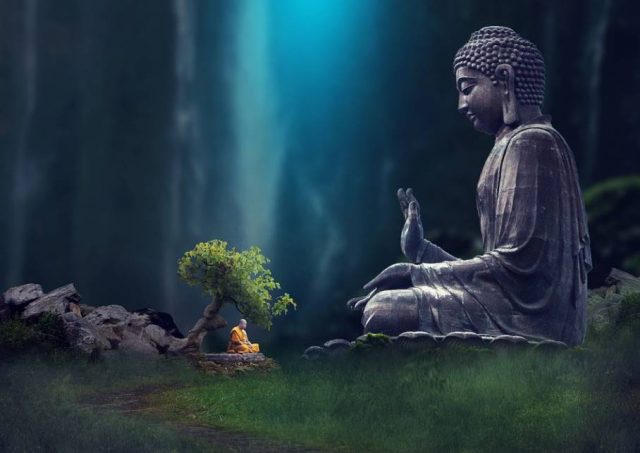The word Buddha is a derivation from the Sanskrit word, which means “awakened one.” Living a moral life, living and acting in compassion and awareness, and constantly coming from a position of knowledge and divine wisdom are the three pillars on which Buddhism is founded.
Both sides of the Buddha’s head statue are often symmetrical, indicating perfection and purity.
The Buddha’s head is modeled after a young and attractive Buddha who exudes serenity and composure in contemplative silence. If you plan to buy a Buddha head statue, you should be able to meditate just by staring at his head. The Buddha’s head is a blend of many diverse elements that give it a particular meaning and strength. With that, let us go through each element of Buddha’s head.
Ushnisha Crown
Ushnisha Crown is the crown that the Buddha wears on his head. Ushnisha is one of the most distinctive aspects of Buddhist art and imagery. It signifies the Buddha’s achievement of enlightenment, reminding us of the Buddha’s knowledge and wisdom. The Ushnisha’s initial function was most likely to represent a crown on the top of the Buddha’s head.
The Urna
The Urna is a spiral or circular dot put as an auspicious symbol on the forehead of Buddhist statues. The third eye resembles the all-seeing eye obtained by the Buddha as a result of his spiritual enlightenment. It represents vision into the heavenly realm, a type of ability to see beyond our original universe of pain and suffering.
The Ear of Buddha
The long earlobes reflect that he was once a royal encrusted with jewels, but he gave it all up in service to holiness and humanity. They also indicate how he can hear all of the world’s sorrow and reacts with understanding, compassion, and knowledge.
The Hair of Buddha
The Buddha wore a topknot when he was a prince. He shaved his head after attaining enlightenment. His representations show him with curly hair that has been chopped short but not shaven to represent the midway ground between indulgence and mortification.
The Eye of Buddha
The Buddha’s eye is constantly half-closed, as though he were in a deep meditation condition. This represents him always being in between worlds, observing everything by his awakened third eye.
The Lips of Buddha
The Buddha is always represented with a grin to show that, despite his suffering, he possesses greater insight and comprehension of the cosmos. He is calm and peaceful amid the unfolding of everything that is and all that will ever be because he understands why it is.
Buddha’s head has long been one of the most prominent iconographic depictions of the Buddha and his attributes. A round, young, attractive, and sweet-looking face is a common feature of Buddha’s head, but there’s more to it than what you see. That is why it is critical to understand every aspect of its head. Buddha’s heads are regarded as one of the essential parts of the Buddha’s body, are made to reflect the enormous quantity of wisdom he has as the awakened one.


